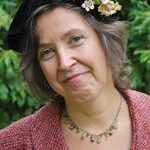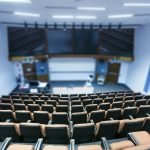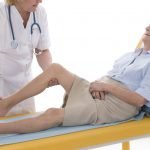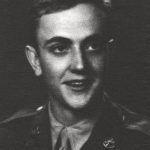Nature Cure Clinical Pearls: What’s Next?
Sussanna Czeranko, ND, BBE
The proper application of the processes of the water-cure never fails of doing good. Its only abuses come from ignorance. The water-cure physician requires a thorough knowledge of the system and a careful discrimination in applying it to various constitutions and the varied conditions of disease. – Mary Nichols, 1874, p.18
Water, air and exercise can be obtained freely. Still, only a few comprehend the value of water in health or sickness. In fact, if all people understood how to use water, its value of cooling, cleansing, invigorating and sustained life, one-half of all the afflictions from disease would be removed and other half banished as soon as all the people understood how and when to eat, how to breathe, and the necessity of daily exercise. – Louisa Lust, 1911, p.231
Self-trust, based upon self-knowledge, is the basis of all healing power. The more you know yourself the more you will trust yourself, for the more you will become acquainted with your own greatness, your own power to create. – Helen Wilmans, 1920, p.91
It took a decade of compiling, editing, checking data, and preparing 12 introductions – and finally The Hevert Collection is in the hands of the profession. All 5169 pages. Copyright, intellectual property, and all revenues from sales belong to NUNM Press in support of publishing ventures building the naturopathic mission. For those not familiar with this project, please allow me a moment to familiarize you with this book series about the origins of our philosophy, practice, and knowledge. The collection consists of 12 books, each averaging 400 to 500 pages. Each volume pertains to a specific topic derived from the original literature, which emerged when Naturopathy was being birthed in the bustle, optimism, and confusion of a new century, starting in New York City in 1900. This was a movement that became an epoch, led by women and men determined to generate and share the knowledge and tools needed to ensure health and well-being for all, and against great pressure. Their clarity about what was needed to help their patients to find, restore, and sustain their own health was crystal clear. So began a new vision, a wider vision about what health truly entailed. The early writings of our forebears created the foundation from which emerged a new profession which has endured clear across the last century and well into the next. These pioneers paved the way for an alternative to the aggressively dominant conventions of allopathic medicine and the industries serving it.
Birth of a Movement
At the center of this movement and of the remarkable literature which grew up around it was Benedict Lust. He began publishing at the age of 24. His small German magazine about the marvels of the Kneipp Water Cure, Amerikansche Kneipp Blätter [1896-1899], was not the first American publication focused on the value of hydrotherapy, nor was it the last to embrace the subject of water and health; however, its robust presence in North America introduced traditions into the healthcare terrain which were sorely needed. The significance of Lust’s first foray into publishing captured an audience that quickly spawned a movement consisting of like-minded people who wanted to spread their mission of introducing and consolidating a more sustainable, natural way of healing. What began as small issues, consisting of a handful of pages, soon catapulted into a full-scale magazine published in English: The Kneipp Water Cure Monthly [1900-1901]. The content principally included excerpts and translations from the books that Sebastian Kneipp had previously published in Germany. Although Lust was the editor and a major contributor, soon other like-minded healthcare professionals began submitting short articles. The trickle became a flood. An abundant body of literature was spawned. Lust understood that one of the cornerstones of professional formation was the codifying of the specific knowledge demarcated by that profession as it provided ever-expanding services and care for patients.
The transformation of the first publications by Lust, that commemorated and chronicled the Kneipp water traditions, blossomed. In the English issues of The Kneipp Water Cure Monthly, change became the norm, and by the December 1990 issue there was evidence that something different was coming. Specifically, one notes a very prescient advertisement that Lust had placed describing himself as a Naturopath rather than as a Hydropathist, a well-known term and professional moniker of the times. Once this new and – some said then, radical – term was released, the train had left the station and it was just a matter of 1 year before Lust would launch the first naturopathic magazine, The Naturopath and Herald of Health, in January 1902.
So dedicated and persevering was Lust, that he continued this powerful work and related journalistic endeavors until his death 50 years later. The Naturopath and Herald of Health [1902-1915] would undergo a name change in 1916 to the Herald of Health and Naturopath, and would again revise its name in 1923 to become simply, Naturopath, a brand that would persist during Lust’s life. The names of his publications were constantly morphing like some kind of a moving target, reflective of a rich literature and the dynamism of a rapidly growing profession. Certainly, mainstream allopathic medical leaders saw the threat to their hegemony, and among their concerns about market dominance was the proliferation of health information that was different than their own reductionist and mechanistic ideas. The new literature had much to say about what health was and about how to sustain that health, and emphasized the huge importance of environment, spirit, and mind in a holistic understanding of human wellness. Thus, the magazine and the many publications incubated by its ideas and popularity continuously addressed new approaches, new ideas, and new values. Allopathic medicine was threatened by the emergence of Naturopathy as a professional alternative community and was determined to snuff out the competition. During his lifetime, Lust was charged 18 times with numerous charges of practicing medicine, often having to defend himself against violations to such mainstream standards as administering a simple bath.
The Hevert Collection
The Hevert Collection was subtitled In Their Own Words because each entry reproduces the language of the original writers and was carefully and respectfully adjusted for language usage, indexed, and its data corroborated to help coordinate terminology and concepts. The collection is a compilation of articles from Lust’s publications from 1897 to 1923. Each book captures original articles that were found in the seminal publications, ranging from history, philosophy, dietetics, principles, practice, hydrotherapy, physical and mental culture, herbs, and the crowning category: clinical pearls. For every article that was included in each of these books, several were set aside due to lack of space. To undertake this project, dozens and dozens of students from the National University of Natural Medicine (NUNM) committed time to transcribe the hundreds of articles found in The Hevert Collection while navigating the rigors and demands of their demanding medical studies. My appreciation and admiration for these students swells to overflowing gratitude. Without the help of my dear students, The Hevert Collection would still be plodding along, likely another 10 years.
I have enjoyed immensely compiling the first writings left behind by the pioneers of our profession, so that future generations of naturopathic doctors can still glean wisdom from them – so that what they knew and practiced is not lost, not eclipsed by the high-tech terrain of contemporary biomedicine, and not eschewed, as a result of a deep respect for nature. To my knowledge, NUNM is the only naturopathic medical institution that has the complete collection of Benedict Lust’s publications. The books are found in the Rare Books Room behind locked doors. To access this body of literature, one would have to physically visit NUNM to enjoy and savor the pearls of wisdom left behind for us to cherish. While working on this project, I have learned so much and have grown richly as a clinician. My cup overflows.
Now that The Hevert Collection is completed, what’s next for this somewhat weary editor? As the editor of this 12-book project, I have become intimately familiar with the stories of the men and women who championed the creation of Naturopathy beginning in the late-19th century. I have fallen in love with their courage, their tireless work, and their legacy. While assembling and editing the hundreds of articles, my path included discovering other authors and health pioneers of that era. Surprisingly female Amazons showed up who have been overlooked or largely forgotten.
History has an odd habit of recording half of the story, and I observed this during my project. I found that the voices of women were silent or scarcely heard. In each of the books, I scoured and searched for articles written by women so that their voices could be part of the record. One of the joys of this project was discovering women whose stories needed to be told and shared as well. As I ponder what’s next, I have a plan to capture the stories of 3 women in particular, among many: Mary Gove Nichols [1810-1884], Helen Wilmans [1831-1907], and Louisa Lust [1868-1925]. My goal is to write and present their stories in a storytelling event and to document them in yet another book. I have recently joined the Saskatchewan Writers Guild in order to propel this project forward. Having colleagues who cherish the value of the written word helps me stay the course. I am excited about this new project and to delve deeper into our precious history. Stay tuned.
Manitou Waters
I am hugely grateful to Hevert, a German homeopathic giant, located in Nussbaum, in the Rhine-Main region and Mainz. The idea for a clinic embodying the principles and traditions of our pioneering forebears came alive in me. Thus, another endeavor indirectly following The Hevert Collection is the creation of my new clinic, located in a remote setting with unusual characteristics. “Manitou Waters” will feature traditional naturopathic therapies, so many of which are mostly forgotten and abandoned by the modern naturopathic clinics. Having spent the last decade studying and researching the almost forgotten literature of Benedict Lust, I have gained an immense respect for the early Naturopaths who did not cringe from impossible and incurable diseases. They understood and embraced their materia medica consisting of water, sunshine, fresh air, and earth cure, and they were competent and capable healers during epidemics of deadly proportions.
Manitou Waters is in a small village of 235 inhabitants in Manitou Beach, which is found in the middle of Saskatchewan, halfway between the 2 major cities of Saskatoon and Regina. “Beach” implies that there is a body of water, and indeed there is – Little Manitou Lake. This lake is quite unique in that it contains vast amounts of minerals and resembles the Dead Sea in terms of mineral composition. “The Dead Sea is the world’s saltiest natural lake, with an average salinity of 280 g/kg, as compared with the ocean’s average of 35 g.” (Wisniak, 2002, p.80) The high levels of magnesium and sulfur compounds found in Manitou Lake have therapeutic properties that balneotherapists highly value. Having explored and studied Balneotherapy, I am looking forward to developing a venue in North America where patients can come and benefit from spa therapies with a flourish of old-time Naturopathy guiding the treatment plans. And, I want to share what we learn, what we do, and what we believe with other naturopathic doctors as well as colleagues from other healthcare professions who are interested in learning about these remarkable tools.
Manitou Waters has been under renovation for the past decade and will soon be completed. The therapies featured at the clinic will absolutely include a wide scope of traditional hydrotherapies that have been showcased in The Hevert Collection. Hydrotherapy can be more than the constitutional hydrotherapy taught at naturopathic schools. Naturopathic doctors interested in preceptoring and attending healing retreats can explore and gain the confidence using traditional naturopathic tools. The early Naturopaths prescribed specific baths, showers, compresses, and wraps for different reasons and purposes. As well, other therapies – such as peloid therapies, sun-cure, and physical culture – will be central to the core programs at Manitou Waters.
Facilities at Manitou Waters enable patients to participate in the resident programs for 1 or 2-week intervals. There is a retreat center that is capable of housing 8-12 people very comfortably and which has a teaching kitchen that will provide healthy and delicious meals for those staying at Manitou Waters. I feel indebted to my community and my tribe and would like to invite anyone interested in learning more about our traditional roots to head north to Manitou Waters. You will be very welcome.
References:
Lust, L. (1911). Water cure, water applications. The Naturopath and Herald of Health, XVI (4), 231, 233.
Nichols, M. (1874). A Woman’s Work in Water Cure and Sanitary Education. London, England: Longmans, Green, and Co., pp. 154.
Wilmans, H. (1920). Posture of the will man. Herald of Health and Naturopath, XXV (2), 89-96.
Wisniak, J. (2002). The Dead Sea: A live pool of chemicals. Indian Journal of Chemical Technology, 9 (1), 79-87.
 Sussanna Czeranko, ND, BBE, has completed the 5200-page, 12-volume set of books entitled The Hevert Collection, based on the publications of Benedict Lust [1897 to 1923]. The project was conducted at NUNM. Copyright, intellectual property, and all revenues from sales belong to NUNM Press in support of publishing ventures building the naturopathic mission. Dr Czeranko now resides in Manitou Beach, Saskatchewan, where she has an inpatient clinic and retreat centre for fellow naturopathic doctors.
Sussanna Czeranko, ND, BBE, has completed the 5200-page, 12-volume set of books entitled The Hevert Collection, based on the publications of Benedict Lust [1897 to 1923]. The project was conducted at NUNM. Copyright, intellectual property, and all revenues from sales belong to NUNM Press in support of publishing ventures building the naturopathic mission. Dr Czeranko now resides in Manitou Beach, Saskatchewan, where she has an inpatient clinic and retreat centre for fellow naturopathic doctors.










